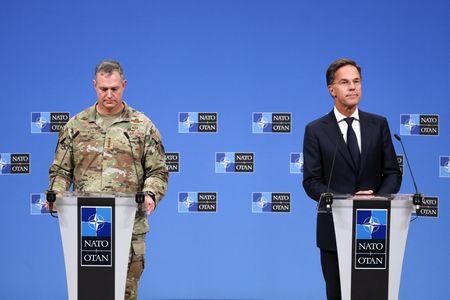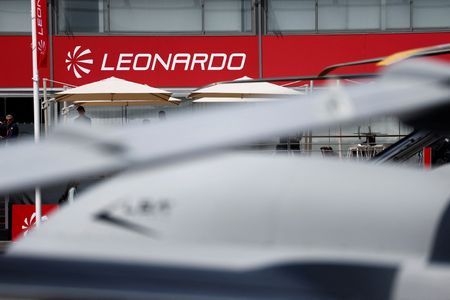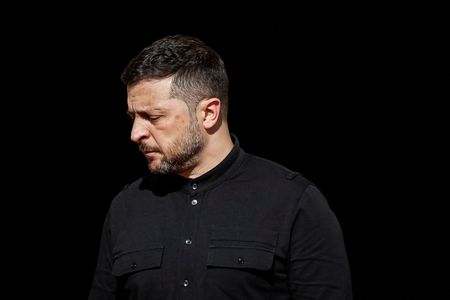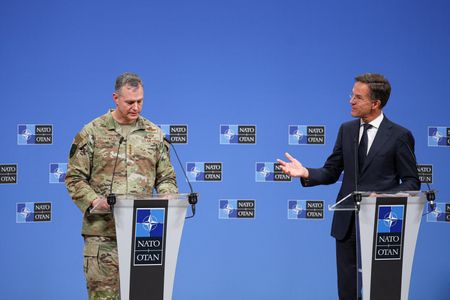By Andrew Gray
BRUSSELS (Reuters) – NATO on Friday launched an operation named Eastern Sentry to bolster the defence of Europe’s eastern flank in response to Russian drone incursions into Polish airspace earlier this week, Secretary-General Mark Rutte said.
“We must, as NATO, make clear our resolve and our ability to defend our territory, and that is exactly what Eastern Sentry is designed to do,” Rutte told a press conference at NATO headquarters in Brussels.
“This military activity will commence in the coming days and will involve a range of assets from allies including Denmark, France, United Kingdom, Germany and others,” he said, standing beside NATO’s top commander, U.S. Air Force General Alexus Grynkewich.
Rutte said NATO was still assessing the possible intent behind the incursion, which led to Polish and allied NATO forces shooting down several drones – the first time NATO has taken such action since Russia’s 2022 invasion of Ukraine.
But he said Russia’s action had been “reckless and unacceptable”, whether intentional or not.
Russia said its forces had been attacking Ukraine at the time of the drone incursions and that it had not intended to hit any targets in Poland. Warsaw has rejected that explanation, saying the incursion was a deliberate attack.
FLEXIBLE RESPONSE ALONG EASTERN FLANK
Grynkewich said Eastern Sentry was designed as a flexible and integrated operation to bolster defences along NATO’s entire eastern flank, which stretches from the Baltic states in the north to Romania and Bulgaria in the south.
“Poland and citizens from across the Alliance should be assured by our rapid response earlier this week and our significant announcement here today,” he said.
NATO already has substantial forces in eastern Europe, including thousands of troops.
It did not put a figure on how many additional troops would be involved in the new operation.
Its announcement detailed a modest number of additional military assets – including two F-16 fighter jets and a frigate from Denmark, three Rafale fighter jets from France and four Eurofighter jets from Germany.
But Grynkewich said the new operation was also about adopting a more flexible approach to defending the eastern flank as a whole, rather than just having more static forces devoted to a particular area.
“Across the eastern flank, we will constantly adjust and change our posture in a manner that keeps the adversary off guard, but also responds to specific threats as we see them emerging,” he said.
(Reporting by Andrew Gray; Bart Meijer, Writing by Charlotte Van Campenhout and John Irish; Editing by GV De Clercq, Alexandra Hudson and Aidan Lewis)












